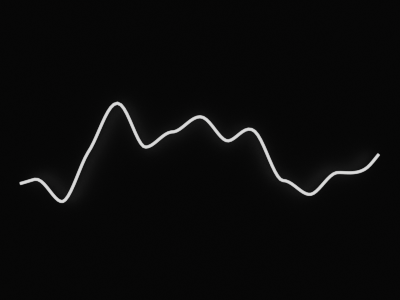HUD & UI Perlin Noise
Main Parameters
Length: Defines the size of the Perlin noise.
Subdivisions: Sets the number of subdivisions or bars in the noise pattern.
Y Offset: Offsets the Perlin noise along the y-axis.
Y Scale: Scales the Perlin noise along the y-axis.
Gaussian Scale: Applies a normal distribution scaling to the Perlin noise.
Rho: Defines the width of the distribution.
Centered Along X: Centers the Perlin noise along the x-axis.
Flip Along Y: Flips the Perlin noise along the y-axis.
Evolution
One Dim X: Uses the X position to drive the main evolution.
One Dim Y: Uses the Y position to drive the main evolution.
Two Dim XY: Uses both X and Y positions to drive the main evolution.


Evolution Parameters
Position X: Defines the noise's X position.
Position Y: Defines the noise's Y position.
Delta: Sets the density of the noise.
Precision: Controls the precision of the values, if no more changes are noticeable, increase subdivisions.
Spread: Similar to Delta but with a fixed start point.
VAN Seed: Defines a seed value for VAN strength.
VAN Seed Strength: Adds additional variation to each subdivision point.
Visualization
Line: Displays the Perlin noise data as a line.
Surface: Displays the Perlin noise data as a surface.
Bars: Displays the Perlin noise data as bars.
Ngons: Displays the Perlin noise data as ngon nodes.
Note: Multiple visualization types can be combined to overlay different representations.




Visualization Parameters
Thickness: Specifies the line thickness for the Perlin noise pattern.
Width: Defines the base size of the bars in the noise pattern.
# Sides: Sets the number of sides for each ngon node.
Radius: Defines the radius of each ngon node.
Angle: Sets the angle offset for each ngon node.
Limits
Y Upper Limit: Defines the upper limit for the Perlin noise values.
Y Lower Limit: Defines the lower limit for the Perlin noise values.
Function
Linear: Uses a linear function of the form (ax + b) as the base for the sine wave.
Quadratic: Uses a quadratic function of the form (ax2 + bx + c) as the base for the sine wave.
Cubic: Uses a cubic function of the form (ax3 + bx2 + cx + d) as the base for the sine wave.
Exponential: Uses an exponential function of the form (ax) as the base for the sine wave.




Function Type Parameters
a: Float value (for the Exponential function, the lower limit is 9.99995e-41).
b: Float value.
c: Float value.
d: Float value.
X Values Offset: Sets the offset for X values in the function.
Transitions
Fade-In: Inbound animations
Fade-Out: Outbound animations.
Note: While the Fade-Out is essentially a mirrored version of the Fade-In, both can be selected and configured independently.

Y Scale: Uses the y-axis scaling to create an incoming transition.
Y Offset: Uses the y-axis offset to create an incoming transition.
Delta: Uses the Delta parameter to create an incoming transition.
Thickness: Uses the line thickness to create an incoming transition.
Note: Multiple intro types can be combined to apply all transitions simultaneously.




Transitions Parameters
Start Frame: Defines the start frame of the introduction relative to the project’s timeline.
Length: Defines the duration of the introduction.
Evolution
X Speed: Creates continuous animation by incrementing the Position X over time.
Y Speed: Creates continuous animation by incrementing the Position Y over time.
Note: These parameters depend on the selected Evolution Type, One Dim X, One Dim Y or Two Dim XY.

